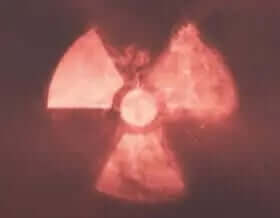Telomere Damage and Cellular Aging: Understanding the Science Behind Your Body's Biological Clock

Telomeres are protective caps at the ends of your chromosomes that play a crucial role in cellular aging and overall health. These remarkable structures determine how your cells age, divide, and ultimately affect your longevity. Recent groundbreaking research has revealed fascinating insights about telomere damage that could transform how we approach healthy aging and cellular regeneration.
What Are Telomeres and Why Do They Matter?
Think of telomeres as the plastic tips on shoelaces that prevent fraying. Similarly, these specialized DNA sequences protect your chromosomes from deterioration during cell division. Every time a cell divides, telomeres become slightly shorter, acting as a biological countdown clock for cellular health.
The relationship between telomere length and aging has captivated scientists worldwide. Healthy telomeres enable cells to continue dividing and functioning optimally, while shortened or damaged telomeres trigger cellular senescence, where cells stop dividing and lose their vital functions.
The Science of Telomere Shortening and Cellular Senescence
When cells reach their division limit due to telomere shortening, they enter a state called cellular senescence. This natural process serves as a protective mechanism against uncontrolled cell growth, but it also contributes to aging and age-related diseases.
Key factors affecting telomere health include:
- Oxidative stress from environmental toxins and poor lifestyle choices
- Chronic inflammation that accelerates telomere attrition
- Genetic factors that influence telomerase enzyme activity
- Lifestyle choices including diet, exercise, and stress management
Breakthrough Discovery: Why Telomere Damage Cannot Be Repaired
A groundbreaking study published in Nature Cell Biology (2012, vol 14 p355) revealed a critical finding about telomere vulnerability. Researchers discovered that when cells experience radiation-induced DNA damage, the body's natural repair mechanisms work effectively throughout most of the genome, but fail specifically within telomere regions.
This discovery highlights a unique characteristic of telomeres: their damage persists even when other DNA regions heal successfully. The implications are profound for understanding cellular aging and developing strategies for healthy longevity.
How Radiation Affects Telomere Integrity
When exposed to radiation, cells activate their DNA damage response system. This sophisticated mechanism typically repairs minor DNA breaks and allows cells to resume normal function. However, the research showed that telomere regions remain unrepaired, creating permanent cellular dysfunction signals.
This persistent damage triggers the same shutdown mechanisms observed in naturally aged cells, suggesting multiple pathways through which telomeres influence cellular senescence.
Multiple Mechanisms of Telomere-Induced Cellular Senescence
The research reveals that telomeres can induce cellular senescence through various mechanisms:
- Progressive shortening through normal cell division
- Direct damage from environmental stressors that cannot be repaired
- Structural changes that trigger protective protein responses
- Epigenetic modifications affecting telomere function
Understanding these multiple pathways opens new possibilities for interventions that could maintain cellular youth and vitality.
Protecting Your Telomeres: Evidence-Based Strategies
While telomere damage from certain sources may be irreparable, research shows you can take proactive steps to protect and potentially lengthen your telomeres through lifestyle choices.
Nutrition for Telomere Health
Specific nutrients have shown promise in supporting telomere integrity:
- Omega-3 fatty acids found in fish oil reduce inflammation and oxidative stress
- Antioxidants from colorful fruits and vegetables combat free radical damage
- Vitamin D supports telomerase activity and cellular health
- Folate and B vitamins essential for DNA methylation and repair
Exercise and Telomere Maintenance
Regular physical activity has been shown to positively influence telomere length. Studies indicate that moderate aerobic exercise, strength training, and yoga can all contribute to telomere preservation. The key is consistency rather than intensity.
Stress Management Techniques
Chronic stress accelerates telomere shortening through increased cortisol production and oxidative stress. Effective stress management practices include:
- Meditation and mindfulness practices
- Quality sleep optimization
- Social connection and community engagement
- Regular relaxation techniques
The Future of Telomere Research and Therapeutic Applications
Scientists are exploring innovative approaches to telomere preservation and enhancement. Emerging research areas include:
Telomerase Activation Therapies
Telomerase is the enzyme responsible for adding nucleotides to telomeres. While most adult cells have low telomerase activity, researchers are investigating safe methods to enhance this enzyme's function without promoting cancer risk.
Gene Therapy Approaches
Advanced genetic techniques may allow targeted telomere lengthening in specific cell types, potentially reversing aspects of cellular aging.
Pharmaceutical Interventions
Several compounds are under investigation for their telomere-protective properties, including specialized antioxidants and telomerase activators.
Understanding Telomere Testing and Monitoring
Telomere length testing has become increasingly accessible, allowing individuals to track their biological age. These tests measure average telomere length in white blood cells, providing insights into cellular health status.
Benefits of telomere testing include:
- Baseline measurement for tracking interventions
- Early detection of accelerated aging
- Motivation for lifestyle improvements
- Personalized health optimization strategies
Real-World Success Stories: Telomere Improvement in Action
Numerous individuals have successfully improved their telomere health through dedicated lifestyle changes. Research participants who adopted comprehensive wellness programs showed measurable telomere lengthening within months.
One landmark study demonstrated that participants following a program of plant-based nutrition, moderate exercise, stress reduction, and social support experienced a 10% increase in telomere length over five years, while the control group showed typical age-related shortening.
Integrating Telomere Health into Your Wellness Journey
Creating a telomere-friendly lifestyle doesn't require dramatic changes. Small, consistent actions compound over time to support cellular health. Start with these foundational steps:
- Add one serving of antioxidant-rich vegetables to each meal
- Take a 20-minute walk daily
- Practice 10 minutes of deep breathing or meditation
- Prioritize 7-8 hours of quality sleep
- Connect with loved ones regularly
Remember, protecting your telomeres is an investment in your future health and vitality. Every positive choice supports your cellular resilience and longevity potential.
Conclusion: Empowering Your Cellular Future
The discovery that telomere damage cannot be repaired emphasizes the critical importance of prevention and protection. By understanding how telomeres function and implementing evidence-based strategies, you can take control of your cellular aging process.
Your telomeres reflect your biological age more accurately than your chronological years. Through mindful choices in nutrition, exercise, stress management, and overall lifestyle, you have the power to influence your cellular health positively. The science of telomeres offers hope and practical pathways to enhanced vitality, proving that aging gracefully isn't just possible—it's within your control.
Frequently Asked Questions About Telomeres
What exactly are telomeres and where are they located?
Telomeres are protective DNA-protein structures located at the ends of each chromosome in your cells. They consist of repetitive nucleotide sequences (TTAGGG in humans) that act like protective caps, preventing chromosomes from deteriorating or fusing with neighboring chromosomes. Think of them as the cellular equivalent of aglets on shoelaces, keeping your genetic material intact and functional.
How do telomeres affect the aging process?
Telomeres play a fundamental role in aging by acting as a cellular clock. Each time a cell divides, telomeres shorten by approximately 50-200 base pairs. When telomeres reach a critically short length, cells enter senescence or die. This process contributes to tissue aging, reduced regenerative capacity, and age-related diseases. Maintaining healthy telomere length can support cellular vitality and potentially slow aspects of biological aging.
Can telomeres be lengthened naturally?
Yes, research shows that telomeres can be lengthened through specific lifestyle interventions. Regular aerobic exercise, stress reduction techniques like meditation, quality sleep, and a nutrient-rich diet have all been associated with telomere lengthening or slower shortening rates. Some studies have documented up to 10% increases in telomere length over several years with comprehensive lifestyle programs.
What causes telomere damage besides normal aging?
Multiple factors accelerate telomere damage beyond normal cellular division. These include oxidative stress from pollution and poor diet, chronic psychological stress, smoking, excessive alcohol consumption, obesity, sedentary lifestyle, and exposure to radiation. Inflammation and certain infections can also damage telomeres. Understanding these factors empowers you to make protective choices for your cellular health.
How can I test my telomere length?
Telomere length testing is available through specialized laboratories using blood or saliva samples. The most common method measures average telomere length in white blood cells using quantitative PCR or flow cytometry techniques. Results typically compare your telomere length to age-matched populations. While these tests provide valuable insights, they should be interpreted alongside other health markers and lifestyle factors.
Are there supplements that support telomere health?
Several supplements show promise for telomere support based on scientific research. These include omega-3 fatty acids, vitamin D, antioxidants like vitamin C and E, resveratrol, and certain adaptogenic herbs. Some specialized formulations contain telomerase activators. However, supplements work best as part of a comprehensive healthy lifestyle rather than standalone solutions. Always consult healthcare providers before starting new supplements.
What is the connection between telomeres and cancer?
Telomeres have a complex relationship with cancer. Short telomeres can promote genetic instability that may lead to cancer initiation. However, cancer cells often reactivate telomerase to achieve unlimited division potential. This dual role makes telomere biology crucial for both cancer prevention and treatment research. Maintaining healthy telomere length through lifestyle choices supports normal cellular function while avoiding the risks associated with excessive telomerase activation.
How quickly do telomeres shorten?
Telomere shortening rates vary significantly between individuals and cell types. On average, telomeres lose 50-200 base pairs per cell division, with most people experiencing a loss of 15-60 base pairs per year in blood cells. However, lifestyle factors dramatically influence this rate. People with healthy habits may experience minimal shortening or even lengthening, while those with poor lifestyle choices may lose telomere length three times faster than average.
Can exercise really impact telomere length?
Absolutely! Multiple studies demonstrate that regular exercise positively affects telomere length. Aerobic activities like running, cycling, and swimming show particularly strong benefits. Research indicates that people who exercise regularly have telomeres appearing up to 10 years younger than sedentary individuals. The optimal amount appears to be moderate exercise for 30-45 minutes, 5 times per week. Both cardiovascular and resistance training contribute to telomere health.
What role does stress play in telomere health?
Chronic stress significantly accelerates telomere shortening through multiple mechanisms. Stress hormones like cortisol increase oxidative damage and inflammation, both harmful to telomeres. Studies show that individuals experiencing chronic stress may have telomeres equivalent to someone 10 years older. Fortunately, stress reduction techniques like meditation, yoga, and mindfulness have been proven to slow telomere shortening and may even promote lengthening. Managing stress is one of the most powerful tools for protecting your telomeres.







